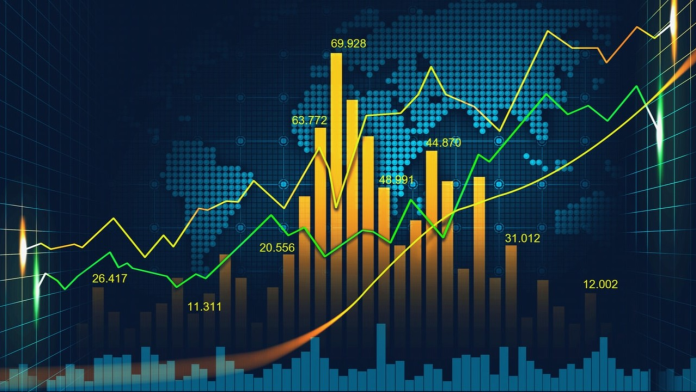Wall Street is bracing for another close run US election year with two prospective incumbents in the form of former President Donald Trump and Vice President Kamala Harris. With the race for the White House ramping up a gear in recent weeks, the implication of the election on the stock market appears to be driving short-term volatility.
With the November presidential election likely to hinge on the swing states of Arizona, Georgia, Michigan, Nevada, North Carolina, Pennsylvania, and Wisconsin, traders are bracing themselves for more market volatility as the United States decides on the direction of the country for the next four years. With uncertainty looming large, could there be an opportunity for profit during the run-up to the big day?
Learning Lessons from History
While it’s too close to determine the winner on November 5, 2024 with any certainty, we can look to historical trends to understand how Wall Street will react to the event and whether traders can uncover opportunities to grow portfolios off the back of market volatility.
Assessing the average and median totals for the S&P 500 Index, returns are slightly lower in presidential election years in comparison to non-election years and 96-year long-term averages.
While S&P 500 returns run generally higher in the buildup to a presidential election in comparison to non-election years, markets generally post lower returns over the one, six, and 12-month periods following election day in comparison to years without elections.
What does this mean for investors? Market trends indicate that positions are best exited rather than held following an election. While relief rallies can occur among markets that could face uncertainty depending on the election winner, it appears that hype plays a significant role in driving market performance as election day looms.
History also suggests that investors adopt a short-term mindset to secure gains. According to a study conducted by US Bank investment strategists using market data from the past 75 years, election outcomes have a minimal impact on financial market performance in the medium to long term.
The study found that factors like economic and inflation trends are generally more impactful than election results over longer time frames.
CFDs to Capitalize on Volatility
For investors seeking market opportunities in the buildup to November 5, speculative trading based on market price volatility is likely to drive stronger yields than long-term holds on Wall Street.
This opens the door for additional contracts for difference (CFD) utility for traders. Because CFDs are contracts that allow investors to speculate on price movements surrounding assets without owning them, the strategy can be a great means of capitalizing on uncertainty surrounding the assets heavily impacted by the outcome of the election.
CFDs focusing on industries like energy, sustainability, defense, manufacturing, and finance could all see exceptional levels of volatility off the back of twists and turns in the election race.
Another alternative industry covered by CFDs, cryptocurrency, already experienced heightened volatility in the wake of Trump and Harris’ September 10, 2024 televised debate, which drew panic selling from cryptocurrency holders fearful of a Trump defeat.
Hedging portfolios with spread bets or trading CFDs can hold new opportunities should we see more of the volatility experienced in the wake of September’s debate, and it’s worth investors looking to incentives via CFD brokers reviews to explore available trading bonuses and range of assets covered for the biggest impact.
Quick Reactions are Pivotal
As we saw with the fallout of the televised debate on September 10, 2024, markets can react at a rapid pace to emerging events. This means that low-latency trading terminals and strong sentiment analysis tools are imperative for traders seeking to maximize their profit margins and capitalize on fleeting price fluctuations across asset classes.
Achieving low-latency trading can be a challenge for retail traders, and taking measures to speed up internet connections and embrace fiber-optic connectivity wherever possible can make a major difference when trading uncertainty.
With sufficient hardware in place, resource-rich investors can utilize ultra-low latency (ULL) trading to take advantage of the marginal price variations among assets during breaking news to the best possible advantage.
Sentiment Will Become Imperative
The 2024 US presidential election is likely to be a key moment in the development of artificial intelligence technology for the utility of social media sentiment to drive trading strategies.
With the ability of AI and its subset technology machine learning (ML) to utilize structured and unstructured data for social listening and deeper sentiment analysis, investors will have unprecedented power in predictive analytics to act on.
As social media becomes increasingly divisive with different demographics split between various networks, democratizing social listening data is becoming a complex challenge for investment tools. With its seamless ability to convert data into powerful insights, investors can become equipped with more tools than ever in trading their way through a tumultuous US presidential election.
Navigating Uncertainty
Historical performance data suggests that the weeks leading up to November 5, 2024 will be the most lucrative for investors seeking to capitalize on the opportunities presented by the election year.
With a close-run presidential race still as likely as ever, trading market volatility will likely offer the best yields for investors, but frictionless trading and democratizing data could be the key to identifying and taking advantage of an opportunity in a timely fashion.
Wall Street has a rich history of rewarding investors who listen to history, and the 2024 US presidential election race could hold plenty of potential for investors willing to embrace the uncertainty.



 Bitcoin
Bitcoin  Ethereum
Ethereum  Tether
Tether  XRP
XRP  USDC
USDC  Wrapped SOL
Wrapped SOL  TRON
TRON  Lido Staked Ether
Lido Staked Ether  Cardano
Cardano  Avalanche
Avalanche  Toncoin
Toncoin